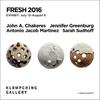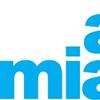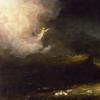The Art of YY Ting and Bada Shanren On Exhibit at Gianguan Auctions
- NEW YORK, New York
- /
- January 07, 2019
An exhibition of calligraphy and one-stroke paintings by the renown Chinese naturalist YY Ting (1902-1978) opens at Gianguan Auction on Thursday, January 24 and runs through February 7. Making the display unique are comparative works by Ming Dynasty naturalist Bada Shanren (1521-1527), who Ting credited with inspiring his oeuvre. “The Art of YY Ting and Bada Shanren” marks the fortieth anniversary of Ting’s passing.
A native of Maoming, Guangdong Province, YY Ting (née Ding Yanyong) was sent, at the age of eighteen, to study western painting in Japan. The experience opened his eyes not only to technique but also to the passion of Japanese artists who abandoned opportunities in Europe to revitalize their cultural heritage. Ten years later, YY Ting saw how the splash ink freehand of Ming artist Bada Shanren reflected Lao Tzu’s philosophy of open mindedness. YY Ting then advanced the concept despite a backlash of public opinion.
Just as abstractionists in the West reduced complex visuals to synergistic lines, YY Ting brought nature into focus. He rendered an entire lotus stem in a simple stroke that captured both the softness and harshness of nature. His text works were lively, as can be seen in “Calligraphy in Couplet.”
While he preferred painting historical subjects such as "Yang Guifei the Concubine Emerging from the Bath" in vibrant color, later one-stroke paintings dominate the exhibition. In “Landscape,” for example, traditional subject matter rendered in flowing, seemingly effortless brush lines takes on energy. The same can be said of minimalist subjects such as “Myna Bird on Willow,” “Sleeping Cat” and “Frogs Coraking in Lotus Pond.”
Overall, apparently insouciant lines laid in with the precision of forethought evoke a sense of joy in viewers. It is little wonder that YY Ting’s paintings are in high demand.
Meanwhile, the portion of the exhibition devoted to the works of Zhu Da, better known as Bada Shanren (Man of Eight Mountains) offers a look at the works that informed Ting's brush.
Bada Shanren’s life as an artist was altered when he broke from Ming formalism to explore a more naturalistic splash ink approach that had originated with a predecessor named Xu Wei. Incurring the ire of Emperor Jiajing (1522-1566), he was reduced to poverty, a state so dismal that fellow artists were reluctant to experiment lest they too lose everything. That was further complicated by the Manchurian invasion that established the Qing Dynasty. To save himself, Bada Shanren became a monk. In the monastery he was free to pursue his artistic journey.
Using long tipped lamb’s wool brushes, Bada Shanren was able to wrap strength in softness and create a certain elasticity that allowed the natural changes in ink color to show through. This simplistic approach also allowed a flower to be just a flower, a bird just a bird, and so on.
Bada Shanren’s personal courage and faith ushered in a new era of Chinese art and established him as the founder of modern Chinese painting.
Viewers will see his rejection of formalism in “Calligraphy,” which appears structured compared to YY Ting’s but is a huge departure from the tightly rendered characters of the day.
In “Geese,” a free flyer lords over two waterfowl locked in water. “No Birds in the Mountains,” painted with a foreshortened perspective of rocks and trees, is a chiaroscuro work that invites endless study.
What a difference five hundred years makes. Not only did China change, the world changed and art with it. Western artists challenged the precepts of the Academy to create Impressionism, Fauvism, Cubism, Expressionism. YY Ting, once opened to western experimentation, found in his own heritage the seeds of abstraction. Ink splash blazed a new trail of spiritual civilization in eastern oil painting.
“The Art of YY Ting & Bada Shanren” opens with a reception in the evening on Wednesday, January 23rd. Daytime hours open on Thursday, January 24 and continue through Thursday, February 7 at Gianguan Auctions Gallery, 39 W. 56th Street. Hours are 10 a.m. to 6 pm. For more information, please visit Gianguan Auctions http://www.gianguanauctions.com/
The date of a special lecture on the works of YY Ting and Bada Shanren will be announced soon.




10270x400_c.jpg)

















